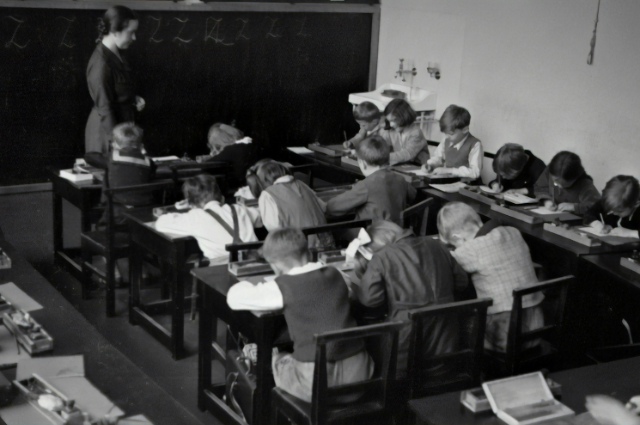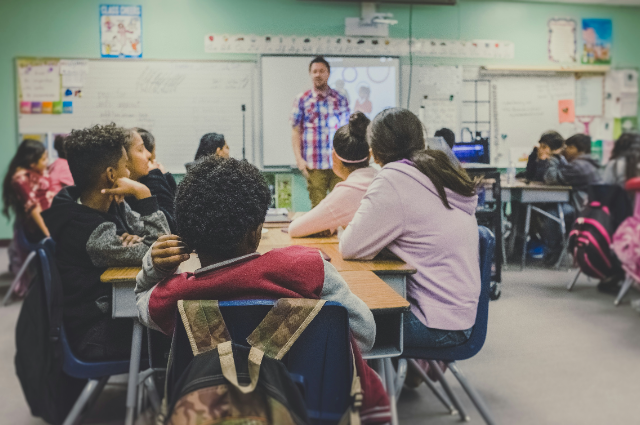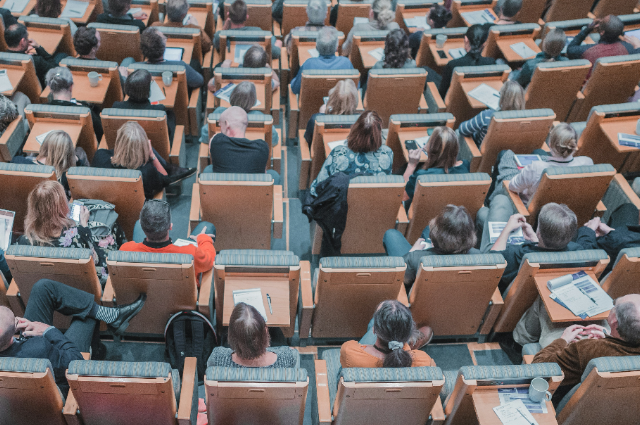
SETTING THE STAGE FOR EDUCATIONAL EVOLUTION
The classroom, a space historically defined by its reliance on chalkboards, has undergone a profound transformation over recent decades. Once, teaching revolved around the tactile simplicity of chalk and slate—tools that symbolized a structured, teacher-centric approach to education. The chalkboard, though rudimentary, allowed for focused instruction but limited interaction, relying heavily on the teacher’s ability to verbally engage students.
However, the advent of digital technology has reshaped this landscape entirely. In an age dominated by rapid technological advancement, traditional teaching tools have given way to smartboards, interactive screens that represent a new era of education. The shift from chalkboards to smartboards encapsulates more than a change in tools; it signals a deeper evolution in pedagogical philosophy—one that emphasizes interactivity, multimedia learning, and enhanced student engagement.
Technology’s role in education extends far beyond the introduction of digital devices. It has fundamentally redefined the way knowledge is disseminated, absorbed, and retained, with a focus on fostering a more dynamic, inclusive, and interactive learning environment. No longer confined to the passive reception of information, students now engage with content through multimedia tools, transforming classrooms into hubs of innovation and collaboration. This shift not only enhances student engagement but also reflects broader societal trends toward digitalization and technological integration in all aspects of life.
As smartboards replace chalkboards, they represent the convergence of education and technology, a fusion that continues to revolutionize the learning experience, making it more immersive and adaptive to the needs of the modern student.
THE ERA OF CHALKBOARDS: SIMPLICITY AND FOCUSED LEARNING
Chalkboards, once the cornerstone of educational instruction, epitomized the simplicity and practicality of traditional teaching methods. Their significance in shaping the foundation of classroom learning cannot be understated, serving as the primary visual aid for generations. The chalkboard's minimalist design, composed of a flat, dark surface and a stick of chalk, fostered a focused learning environment. It required neither electricity nor advanced technology, making it accessible across diverse educational settings, regardless of socioeconomic constraints.

A. Importance and Effectiveness in Traditional Education:
In an era when resources were scarce and teaching aids were limited, the chalkboard was an invaluable tool for educators. It provided a centralized space where teachers could outline lessons, draw diagrams, and work through problems in real-time. This shared visual aid fostered a collective learning experience, as students could follow the unfolding lesson simultaneously.
Furthermore, the chalkboard allowed for adaptability. Teachers could easily erase mistakes, modify explanations, and respond to students’ questions on the spot, ensuring clarity and continuity in instruction.
The chalkboard's tactile nature also reinforced memory retention. Writing on the board required deliberate actions, which helped students visually absorb information as they watched the teacher work through each concept. The process of writing, erasing, and rewriting fostered a rhythm of learning that kept the classroom centered on the lesson, with few distractions. In its simplicity, the chalkboard embodied a form of focused, uninterrupted teaching.
B. Teacher-Centered, Lecture-Driven Instruction:
However, the chalkboard reinforced a teacher-centered approach to education, where the flow of information was unidirectional—from teacher to student. The classroom dynamics of the chalkboard era were rooted in a lecture-driven model, where the teacher stood at the front of the class, dispensing knowledge while students passively absorbed information. This method placed the educator in a position of authority, controlling the pace and content of the lesson, with limited opportunity for student interaction.
The physical setup of the classroom, with desks arranged to face the chalkboard, further emphasized this dynamic. The chalkboard became the focal point, and students were expected to remain silent, listen attentively, and take notes. While this structure ensured a level of discipline and order, it did little to foster active learning or critical thinking. The lack of student engagement often resulted in passive learning, where students memorized information without fully understanding or interacting with the content.
C. Limited Interactivity and Challenges in Student Engagement:
One of the chalkboard's primary limitations was its lack of interactivity. Learning was largely a passive activity, as students rarely participated in the lesson beyond listening and copying notes. Opportunities for active engagement were minimal, confined to moments when a student was called to the board to solve a problem. This occasional interaction, while beneficial for some, was insufficient to engage the entire class.
Additionally, the chalkboard's reliance on the teacher’s ability to communicate effectively posed challenges for students with different learning styles. Visual learners might benefit from diagrams and written notes, but auditory and kinesthetic learners had fewer opportunities to engage. The absence of multimedia or interactive content meant that lessons could become monotonous, leading to a decline in attention and retention, particularly during long, lecture-heavy sessions.
Furthermore, chalkboard instruction limited the teacher’s ability to differentiate lessons based on individual student needs. Every student received the same information at the same pace, regardless of their unique learning abilities. This one-size-fits-all approach hindered personalized learning, making it difficult for students who required more time or alternative explanations to fully grasp the material.
- In conclusion, while the chalkboard was a crucial tool in traditional education, providing simplicity and a structured approach to learning, it also had notable limitations.
- The emphasis on teacher-centered, lecture-driven instruction, combined with minimal student interaction, often led to disengagement.
- The era of the chalkboard, though effective in its context, set the stage for the technological advancements that would later transform classroom dynamics and enhance student participation.
THE TRANSITION: OVERHEAD PROJECTORS AND EARLY DIGITAL TOOLS

The transition from the simplicity of chalkboards to more technologically advanced teaching tools was marked by the introduction of overhead projectors, personal computers, and other early digital aids.
This phase, although a significant step forward, was still relatively limited in scope compared to the interactive technologies we see today. Overhead projectors became a staple in classrooms, allowing teachers to present pre-written material or transparencies to the entire class. This visual aid enhanced the delivery of information but maintained a one-way, teacher-driven dynamic, offering minimal interactivity with students.
- Visual Content Enhancement: The overhead projector’s ability to display diagrams, images, and prepared notes brought a more visually engaging element to lessons, moving beyond the monotony of chalk and text. However, the content was static, and the learning experience was passive, as students were mere recipients of the material presented.
- Computers in Classrooms: The gradual introduction of personal computers marked the beginning of digital integration into education. Basic computer programs and word processors allowed for more creative ways to present information, yet their role in the classroom was often supplementary. Limited software options and a lack of connectivity hindered deeper engagement.
- Digital Tools and Static Interaction: Despite the increased use of visuals, these tools did not facilitate active participation. Students were still expected to absorb information, with little opportunity to interact with the material in real-time. Learning remained a linear process, and the educator retained full control of the lesson’s flow.
While this period saw important advancements in content delivery, the lack of dynamic interaction between students and the material highlighted the limitations of these early technologies. It was a necessary stepping stone towards the more interactive and immersive tools that would follow.
SMARTBOARDS: A NEW ERA OF INTERACTIVE LEARNING
The introduction of smartboards marks a significant turning point in the evolution of classroom education. Unlike traditional chalkboards or even overhead projectors, smartboards combine advanced technology with educational content delivery, creating an immersive, interactive learning experience.
With features such as touch screen functionality, internet connectivity, and multimedia capabilities, smartboards have transformed the way teachers engage with students, moving beyond the limitations of static presentations and rote instruction.

Features of Smartboards:
1. Touch Screen Interface:
One of the defining aspects of smartboards is their touch-sensitive surface, allowing users to interact with the board using their fingers or special pens. This enables teachers and students to manipulate digital content directly on the board, making it possible to write, draw, drag, and drop elements seamlessly.
It provides a dynamic alternative to traditional whiteboards or projectors, where interaction was limited to passive observation.
2. Internet Connectivity:
Smartboards are often integrated with internet access, opening the door to real-time information retrieval and a wealth of online resources. This feature allows educators to stream videos, display live data, or access educational websites directly in the middle of a lesson, keeping the learning experience relevant and up-to-date with current knowledge.
3. Multimedia Integration:
The ability to incorporate various forms of media—such as videos, animations, images, and audio—makes smartboards a versatile tool in enhancing lesson engagement. Complex concepts can be broken down visually, making abstract ideas more accessible and reducing the cognitive load on students. This multimedia approach caters to diverse learning styles, ensuring a more inclusive and effective teaching environment.
Enhanced Interactivity and Engagement:
Smartboards transform passive lessons into active learning sessions. Traditional teaching methods, reliant on a teacher-centered approach, often leave students as mere spectators. Smartboards, however, invite students to participate directly in the learning process. Interactive quizzes, educational games, and group activities can be conducted through the smartboard, allowing students to engage with the material in a tactile, visual, and auditory manner.
- For instance, a teacher discussing geometry can illustrate shapes in real-time, while students manipulate those shapes on the board to understand spatial relations better. This hands-on approach not only makes the lesson more engaging but also improves retention by involving students in the learning process directly.
Shift Toward a Student-Centered Approach:
The adoption of smartboards has also prompted a shift from teacher-centered instruction to a more student-focused methodology. With traditional blackboards, the teacher was the primary source of knowledge, while students passively absorbed information. Smartboards, however, facilitate a more collaborative environment. Teachers can invite students to interact with the board, fostering peer learning and encouraging participation from all members of the class.
Additionally, the real-time feedback provided by smartboards enables teachers to assess student understanding more immediately and adapt the lesson accordingly. If a particular student is struggling with a concept, the teacher can address it instantly by using the smartboard’s interactive tools, such as displaying further examples or offering tailored exercises. This personalized feedback loop enhances individual learning outcomes, ensuring that no student is left behind.
In conclusion, the advent of smartboards has revolutionized classroom dynamics. By enabling real-time interaction, fostering collaboration, and integrating multimedia content, smartboards have shifted the educational experience towards a more engaging, student-centered approach.
They represent a powerful tool in modern education, bridging the gap between traditional pedagogy and the demands of 21st-century learners.
IMPACT ON STUDENT ENGAGEMENT
The advent of technology in classrooms has fundamentally transformed the dynamics of student engagement. Where once students passively absorbed information, modern tools such as smartboards, tablets, and interactive software have redefined how they participate in the learning process. This shift has notably enhanced attention, fostered deeper participation, and improved overall comprehension.

1. Enhancing Attention and Focus
Technology captivates students' attention through its dynamic and multimedia capabilities. Traditional lectures, limited by a single modality, often struggle to maintain student focus, especially in younger learners or those with shorter attention spans. In contrast, digital platforms integrate visual, auditory, and tactile stimuli, keeping students engaged through interactive content and real-time feedback.
For instance, when a teacher transitions from a static presentation to a smartboard activity where students can physically interact with the lesson—whether through touch or motion—learners become active participants rather than passive listeners. This involvement significantly boosts concentration, making lessons more memorable and engaging.
2. Active Participation and Collaboration
Technology fosters a more inclusive environment, encouraging students to actively participate rather than sit back in anonymity. Tools like smartboards and learning management systems allow for real-time quizzes, polls, and interactive games, creating opportunities for instant feedback. This immediate response loop promotes engagement as students feel that their input matters. Additionally, collaborative tools—such as shared digital workspaces—facilitate group work and peer-to-peer learning, a crucial element in developing social and cognitive skills.
For example, using a classroom app, a teacher can divide students into teams, each working on a different component of the same project. Students can communicate, share resources, and edit the project in real-time, all while the teacher monitors progress. This setup not only boosts engagement but also instills a sense of responsibility and teamwork.
3. Catering to Diverse Learning Styles
One of the most significant impacts of technology is its ability to accommodate different learning styles. Traditional methods often cater to only auditory learners—those who absorb information best through listening. However, technology introduces flexibility, allowing educators to tailor content to visual, auditory, and kinesthetic learners.
- Visual learners benefit from digital charts, infographics, and videos that break down complex ideas into easily digestible formats.
- Auditory learners thrive in environments where podcasts, lectures, or videos supplement classroom instruction.
- Kinesthetic learners engage through hands-on activities such as interactive simulations, touchscreen exercises, or virtual labs that require physical involvement.
For instance, a smartboard-enabled lesson might include a video explaining the water cycle, followed by a digital simulation where students move icons around to demonstrate their understanding. This multi-sensory approach ensures that each learner engages with the material in a way that suits their individual preferences, thus enhancing overall understanding and retention.
4. Pros and Cons of Technological Reliance
While the benefits of technology in fostering engagement are evident, there are also concerns about its overuse. One significant advantage is the accessibility of information and the ability to create more personalized, engaging content. However, this reliance on digital tools comes with drawbacks.
Pros:
- Increased engagement: Interactive tools make lessons more appealing and relatable to digital-native students.
- Immediate feedback: Tools like quizzes and interactive lessons give teachers real-time data on student understanding, allowing for rapid adjustments.
- Flexibility: Technology accommodates different learning styles and can make content more accessible to students with disabilities.
Cons:
- Over-reliance on technology: Excessive dependence on digital tools can diminish critical thinking and problem-solving skills, as students may resort to seeking instant answers online.
- Distraction risks: Devices such as tablets and laptops can become sources of distraction if not properly monitored. Students may stray from educational tasks and engage in off-topic activities.
- Inequity and access: Not all students have equal access to advanced technology, potentially widening the gap between those who benefit from these tools and those who do not.
In conclusion, while technology has undoubtedly revolutionized student engagement by enhancing attention, participation, and catering to varied learning styles, it is crucial to maintain a balanced approach. The goal should be to use these tools as supplements to, rather than replacements for, critical thinking and foundational skills development.
CHALLENGES AND CONSIDERATIONS
The transition from traditional chalkboards to smartboards, while revolutionary, has not come without its set of challenges. One of the foremost issues is the ;
- Digital divide — the gap between students who have access to modern technology and those who do not. In underfunded schools or rural areas, the integration of smartboards may be either absent or inadequate, creating an educational imbalance. This disparity can perpetuate inequality, leaving some students at a severe disadvantage in their learning environment.
- Another pressing challenge is teacher adaptability. Many educators, especially those accustomed to traditional teaching methods, struggle to incorporate smartboards effectively. Mastering the technology requires both time and professional development, and teachers resistant to change may underutilize the potential of these tools. Without adequate training, smartboards may become nothing more than glorified projectors, failing to engage students as intended.
- Over-reliance on technology also presents a risk. The allure of smartboards and other digital tools may lead to a superficial focus on flashy content, diverting attention from the depth of subject matter. Interactive lessons can be engaging, but if not used thoughtfully, they can reduce critical thinking and in-depth analysis in favor of quick, easy engagement. In this way, the richness of the learning experience may suffer.
- Moreover, the introduction of smartboards can lead to potential distractions. Students may become more focused on the technical aspects of the tool rather than the lesson itself. The inclusion of multimedia, while often beneficial, can at times overwhelm the primary educational goals, causing students to lose focus on the fundamental concepts being taught.
- Finally, there is concern that foundational skills —such as handwriting, note-taking, and mental arithmetic—are diminishing in the face of smart technology. With the shift towards digital note-taking and interactive participation, students may no longer practice the essential skills that foster cognitive development and retention. The tactile experience of writing on a chalkboard or taking notes by hand has proven benefits for memory and comprehension, and the decline in these practices may have long-term consequences on students' abilities to process and retain information.
In conclusion, while smartboards have undeniably enhanced classroom engagement, these challenges must be addressed to prevent technology from undermining the very goals of education. Balanced integration, coupled with teacher training and consideration of core skills, is essential to maximize the benefits of smart technology without sacrificing educational quality.
FUTURE OF CLASSROOM TECHNOLOGY: BEYOND SMARTBOARDS
As education continues to advance, the advent of immersive technologies such as Virtual Reality (VR), Augmented Reality (AR), and Artificial Intelligence (AI) holds immense potential to revolutionize classroom learning far beyond what smartboards have achieved. These technologies represent the next frontier in interactive, personalized, and highly engaging educational experiences.

A. Virtual Reality (VR)
VR has the power to transport students to entirely new environments—whether it's walking through ancient civilizations, exploring the human body in 3D, or experiencing complex scientific phenomena in ways that a traditional classroom simply cannot replicate. By offering immersive, sensory-rich experiences, VR enables students to engage with content more deeply, fostering a level of experiential learning that transcends passive observation.
B. Augmented Reality (AR)
Unlike VR, which creates a wholly digital environment, AR overlays digital information onto the real world. This allows students to interact with both virtual and physical elements simultaneously. For instance, AR can bring textbooks to life, transforming flat images into 3D models that students can manipulate, or provide real-time translations in language learning. Such technology can significantly boost student engagement by making abstract concepts tangible and interactive.
C. Artificial Intelligence (AI)
AI's potential in education lies in its ability to create highly personalized learning experiences. By analyzing student data, AI systems can adapt lessons to match individual learning speeds, strengths, and weaknesses. AI-powered tutoring systems can offer customized feedback and practice, while intelligent assessments can identify areas where students need more attention. This tailored approach could drastically reduce the one-size-fits-all limitations of traditional teaching, ensuring that no student is left behind.
Evolution of Student Engagement with Emerging Tools
These emerging technologies promise to enhance student engagement by making learning more interactive, adaptive, and personalized. In classrooms that utilize VR and AR, students are no longer passive recipients of information but active participants in their learning journeys. For instance:
- Interactive Learning: VR and AR can turn lessons into hands-on experiences, enabling students to interact with learning materials in unprecedented ways.
- Increased Motivation: The novelty and immersive nature of these tools are likely to boost motivation and curiosity, making even the most challenging subjects more appealing.
- Tailored Learning Paths: AI-driven systems can offer real-time feedback, allowing students to progress at their own pace and focus on areas that require improvement.
- Collaborative Learning: AI and AR tools can facilitate collaboration, allowing students to work together on projects in virtual environments, regardless of their physical locations.
However, the successful implementation of these technologies depends on overcoming significant challenges, including the digital divide, teacher training, and ensuring that technology complements rather than replaces fundamental learning skills.
Conclusion: The Ongoing Evolution
The journey from chalkboards to smartboards marks a significant shift in teaching methods, characterized by an increased emphasis on interactive and student-centered learning. Smartboards transformed the passive learning model by enabling multimedia presentations, real-time collaboration, and dynamic engagement. Yet, the potential of emerging technologies like VR, AR, and AI suggests that the evolution of educational tools is far from complete.
- As classrooms become more immersive and tailored to individual learning needs, the role of the teacher will evolve from being a mere transmitter of knowledge to a facilitator of deeply engaging, personalized learning experiences. In this ever-changing landscape, technological innovation will continue to shape the future of education, making learning more accessible, dynamic, and adaptable.
- The challenge ahead lies in integrating these tools in ways that enhance rather than distract from the core objectives of education, ensuring that students not only engage with the material but also develop the critical thinking and problem-solving skills necessary for the future.
. . .
REFERENCE
- https://www.hindustantimes.com/education/news
- https://indianexpress.com/article/education/
- https://www.ndtv.com/education/
- https://www.thehindu.com/news/national/
- https://www.newindianexpress.com/nation
